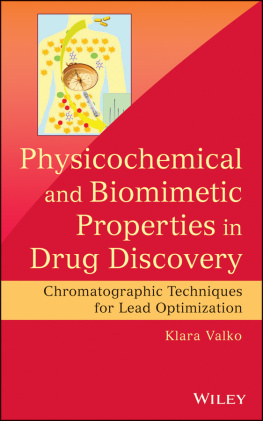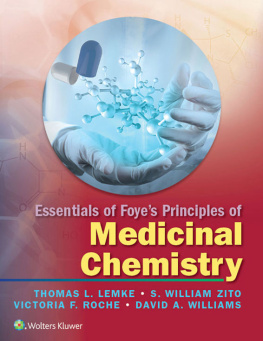
Copyright 2014 by John Wiley & Sons, Inc. All rights reserved
Published by John Wiley & Sons, Inc., Hoboken, New Jersey
Published simultaneously in Canada
No part of this publication may be reproduced, stored in a retrieval system, or transmitted in any form or by any means, electronic, mechanical, photocopying, recording, scanning, or otherwise, except as permitted under Section 107 or 108 of the 1976 United States Copyright Act, without either the prior written permission of the Publisher, or authorization through payment of the appropriate per-copy fee to the Copyright Clearance Center, Inc., 222 Rosewood Drive, Danvers, MA 01923, (978) 750-8400, fax (978) 750-4470, or on the web at www.copyright.com. Requests to the Publisher for permission should be addressed to the Permissions Department, John Wiley & Sons, Inc., 111 River Street, Hoboken, NJ 07030, (201) 748-6011, fax (201) 748-6008, or online at http://www.wiley.com/go/permission.
Limit of Liability/Disclaimer of Warranty: While the publisher and author have used their best efforts in preparing this book, they make no representations or warranties with respect to the accuracy or completeness of the contents of this book and specifically disclaim any implied warranties of merchantability or fitness for a particular purpose. No warranty may be created or extended by sales representatives or written sales materials. The advice and strategies contained herein may not be suitable for your situation. You should consult with a professional where appropriate. Neither the publisher nor author shall be liable for any loss of profit or any other commercial damages, including but not limited to special, incidental, consequential, or other damages.
For general information on our other products and services or for technical support, please contact our Customer Care Department within the United States at (800) 762-2974, outside the United States at (317) 572-3993 or fax (317) 572-4002.
Wiley also publishes its books in a variety of electronic formats. Some content that appears in print may not be available in electronic formats. For more information about Wiley products, visit our web site at www.wiley.com.
Library of Congress Cataloging-in-Publication Data:
Valko, Klara
Physicochemical and biomimetic properties in drug discovery : chromatographic techniques for lead\hb optimization / Klara Valko, CSC-Analytical Chemistry, Platform Technology & Sciences,\hb GlaxoSmithKline, United Kingdom, and Department of Pharmaceutical and Biological Chemistry, UCL, School of Pharmacy, London, United Kingdom.
pages cm
Includes bibliographical references and index.
ISBN 978-1-118-15212-6 (cloth)
1. Drug developmentStatistical methods. 2. Chromatographic analysis. 3. Clinical trials
Statistical methods. 4. Pharmaceutical biotechnology. I. Title.
RM301.25.V35 2014
615.19dc23
2013027975
Preface
During the past 10 years I have been teaching the Physchem/ADME (absorption, distribution, metabolism, and elimination) module for Drug Discovery M.Sc. students at the School of Pharmacy, University of London (University College London since 2012). The module covers ADME and the underlying physicochemical properties of drugs. This book is intended to summarize the course material, providing detailed explanations of the physicochemical aspects of drug absorption and distribution in vivo. It is well recognized now that drug molecules occupy a relatively small physicochemical property space in comparison to the huge number of possible physicochemical entities. Lipophilicity, solubility, permeability, and the charge state of molecules are the most important properties that influence absorption and in vivo distribution. Thus, the measurement and calculation of lipophilicity, solubility, permeability, and the charge state are essential early on in the drug discovery process in order to select compounds for further studies. Compounds selected in this way have the best possible chance to make it to development and eventually help patients recover or at least improve their quality of life. The principles of the measurement of physicochemical and biomimetic properties are explained in more detail. Special emphasis is given to the chromatographic measurements of various physicochemical and biomimetic properties of drugs. It will be shown how to interpret the chromatographic retention data by putting them into various models for the estimation of in vivo distribution behavior of compounds. Other techniques are also mentioned, and further references are provided but not discussed in detail.
The chromatographic dynamic equilibrium process provides an excellent model to describe a compound's in vivo distribution between the moving plasma/blood compartment and the stationary tissue compartments. The reader will learn that chromatography is a powerful technique not only for the separation of closely related compounds but it is also very useful to measure a compound's interactions with various biomimetic stationary phases covered with alkyl chain, proteins, and phospholipids. The obtained binding data are suitable for deriving quantitative structurephysicochemical property relationships (QSPR) that can be used in drug design. Mathematical models can be constructed for the estimation of a compound's in vivo distribution. Active transporters and other specific binding of the molecules to various types of proteins and phospholipids can, of course, modulate the estimated distribution, and these potential interactions need to be taken into account during the lead optimization process. When significant differences are observed between the in vivo measured and estimated distribution behavior of a compound based on physicochemical properties, it indicates to the drug discovery scientist that the compound undergoes some active transport mechanism. The active transport process can push the compound concentration from the thermodynamic equilibrium, but it requires constant energy investment from the body via biochemical processes.
This book contains previously published ideas, concepts, and methodologies. This literature review is far from comprehensive; it is rather critical and selective in order to reveal various ways to approach problems. However, the book provides simple descriptions and explanations of the essence of selected publications that usually help students understand the methods, results, and conclusions of scientific papers. A chapter dedicated to chromatography describes the basic principles and practical considerations that are needed to set up and run the measurements that are discussed in later chapters. Examples are shown how to use experimental data in various models of absorption, tissue binding, volume of distribution, and other in vivo ADME characteristics of the drugs. The property data obtained by fully automated chromatographic measurements can be used to select and prioritize compounds for further in vitro and in vivo studies at early stages of the drug discovery process. A special chapter is dedicated for the interpretation of the data, the interrelationship between the physicochemical properties, and some structureproperty relationships in the hope that medicinal chemists can use the information for designing new potential drug molecules.
Although there are several books that cover similar topics, this book is unique in many ways. First, the chromatographic technique is normally described as an analytical separation method, and it is rarely discussed as a tool for property measurements of drug discovery compounds. There are hundreds of research papers and a few reviews that demonstrate the usefulness of the technique for such purposes but the general explanations together with a deeper understanding has not been published in a textbook yet. Sufficient detail is provided to enable the reproduction of chromatographic measurements in any laboratory equipped with HPLC. Second, this book is unique in the sense that it contains some new insight into the interdisciplinary knowledge needed for designing efficient drugs with minimal side effects. The intention is to reveal the relationships between various disciplines such as physical chemistry, analytical chemistry, biology, and pharmacokinetics/pharmacodynamics by the underlying basic thermodynamic laws.
Next page




